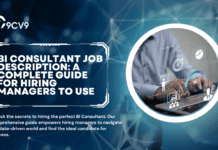Key Takeaways
- GRC in 2025 focuses on digital transformation, automation, and AI-driven compliance to strengthen business resilience and efficiency.
- ESG reporting, data privacy, and cybersecurity have become core pillars of modern governance and regulatory strategy.
- Integrated GRC frameworks empower organizations to predict risks, enhance transparency, and maintain sustainable compliance practices.
In today’s rapidly evolving business landscape, Governance, Risk, and Compliance (GRC) has become a critical pillar for organizations striving to achieve operational resilience, maintain stakeholder trust, and meet regulatory obligations. As global industries navigate complex digital transformations, shifting regulations, and emerging risks, the importance of effective GRC frameworks in 2025 has never been greater. From data privacy and cybersecurity threats to environmental, social, and governance (ESG) accountability, companies are under immense pressure to strengthen their governance models and ensure a culture of compliance that supports sustainable growth.

The year 2025 marks a transformative era for GRC, where automation, artificial intelligence, and predictive analytics are redefining how organizations identify risks, monitor compliance, and align governance structures with strategic objectives. Businesses are now leveraging advanced GRC software platforms to integrate data-driven insights, streamline policy management, and enhance transparency across departments. As a result, decision-makers are moving away from reactive compliance measures to proactive, technology-enabled strategies that anticipate and mitigate potential risks before they escalate.
A surge in regulatory reforms, particularly in data protection and corporate accountability, has further amplified the relevance of GRC programs. Governments across regions are enforcing stricter laws, such as enhanced cybersecurity regulations and ESG disclosure requirements, compelling organizations to adopt comprehensive compliance mechanisms. At the same time, stakeholders — including investors, customers, and employees — are demanding greater visibility into how businesses manage risk and uphold ethical governance practices. This paradigm shift has made GRC not just a compliance necessity but a strategic business enabler that drives reputation, performance, and long-term value creation.
Moreover, the integration of artificial intelligence (AI), machine learning, and blockchain technologies into GRC solutions is revolutionizing risk management operations. AI-driven compliance monitoring tools are helping organizations detect anomalies, predict potential regulatory breaches, and automate audit trails in real time. Blockchain, on the other hand, enhances data integrity and transparency across complex compliance processes, enabling organizations to build trust and accountability throughout their operations. These advancements are transforming GRC into a more agile, data-centric discipline capable of adapting to the ever-changing risk landscape.
In 2025, emerging trends such as ESG compliance, cybersecurity resilience, third-party risk management, and data governance are at the forefront of corporate priorities. Companies are recognizing that GRC is not merely about adhering to rules — it is about building a resilient organization that can withstand disruption, manage crises effectively, and maintain ethical standards in every aspect of its operation. The integration of GRC frameworks into enterprise strategy allows businesses to align risk management with corporate objectives, ensuring that compliance becomes an enabler of innovation rather than a hindrance.
This comprehensive report on the Top 100 Governance, Risk, and Compliance (GRC) Statistics, Data, and Trends in 2025 aims to provide valuable insights into how organizations are evolving their risk and compliance practices in response to global changes. It highlights the key data points shaping the future of governance, explores industry-wide adoption patterns of GRC technology, and identifies the major challenges companies face in maintaining compliance efficiency. Whether you are a corporate leader, compliance officer, risk analyst, or technology professional, this detailed compilation will help you understand the forces driving modern GRC transformation and guide you toward more informed, strategic decision-making in 2025 and beyond.
By exploring these statistics and insights, readers will gain a deeper understanding of how leading enterprises are leveraging GRC to safeguard their operations, enhance accountability, and build future-ready compliance ecosystems capable of thriving in an increasingly regulated and interconnected world.
Before we venture further into this article, we would like to share who we are and what we do.
About 9cv9
9cv9 is a business tech startup based in Singapore and Asia, with a strong presence all over the world.
With over nine years of startup and business experience, and being highly involved in connecting with thousands of companies and startups, the 9cv9 team has listed some important learning points in this overview of the Top 100 Governance, Risk, and Compliance (GRC) Statistics, Data & Trends in 2025.
If your company needs recruitment and headhunting services to hire top-quality employees, you can use 9cv9 headhunting and recruitment services to hire top talents and candidates. Find out more here, or send over an email to [email protected].
Or just post 1 free job posting here at 9cv9 Hiring Portal in under 10 minutes.
Top 100 Governance, Risk, and Compliance (GRC) Statistics, Data & Trends in 2025
- The global GRC software market is expected to reach $774 million by the end of 2025, following a projected compound annual growth rate (CAGR) of 10.2% through 2033, demonstrating robust demand for governance and compliance solutions worldwide.
- The cyber security-focused GRC industry reported global revenues of $7.2 billion in 2024, which are projected to nearly triple to $18.2 billion by 2030, with an anticipated CAGR of 17% between 2025 and 2030, driven by the escalating need for regulatory compliance in cybersecurity.
- The total GRC platform market in 2025 was valued at $51.43 billion, and this is expected to grow to $84.67 billion by 2030, reflecting a substantial CAGR of 10.49% over the next five years as organizations digitize risk management.
- By 2033, the European market for GRC platforms is forecast to increase to $27.08 billion, rising from $24 billion in 2025, at an annual growth rate of 6.92% fueled by regulatory reforms and digitalization efforts across the continent.
- Financial services accounted for the largest sector share at 32% of the global GRC platform market in 2025, highlighting finance as the most proactive industry in adopting comprehensive compliance solutions.
- Organizations implementing integrated GRC frameworks reported an average ROI of 25%, meaning for each dollar invested in GRC technologies, an average return of 25 cents in savings or enhanced revenue was realized.
- Healthcare organizations that adopted GRC platforms achieved annual audit process savings upward of $200,000, mainly by reducing labor time and automating the collection of compliance evidence.
- In the education sector, investments in cybersecurity compliance produced a cost-benefit ratio of 0.02016, which is considerably higher compared to the financial sector’s 0.00547 ratio, suggesting education derives more measurable benefit per dollar invested.
- According to recent surveys, 38% of organizations report that GRC now directly supports both profitability and business growth, making risk management a central driver of organizational success.
- As many as 96% of companies struggle to manage the pace of increasing regulatory requirements, and more than 70% have faced compliance breaches or penalties in just the last year, underlining the challenges of effective compliance.
- The share of organizations pursuing ISO 27001 certification grew from 67% in 2024 to 81% in 2025, reflecting the escalating importance of information security compliance.
- Internal audit findings in companies with advanced GRC tools are addressed in an average of just 12.5 business days, highlighting the operational efficiency driven by automated risk remediation.
- In organizations with mature GRC systems, the mean number of detected high-priority vulnerabilities per critical application stands at only 0.49, about half the rate found in less mature environments.
- GRC-mature companies are able to detect and resolve 37% more cyber threats on average compared to their less structured peers, emphasizing the real-world protective value of GRC frameworks.
- The introduction of zero-trust architecture driven by GRC, including multi-factor authentication protocols, has resulted in a 1.81 times greater reduction in data security breaches within the financial sector compared to those without such initiatives.
- With comprehensive GRC programs, organizations report a drop in the number of incident response actions each quarter from an average of 3.2 to 1.1, signifying better early risk detection and mitigation.
- Over 84% of enterprises deploying GRC solutions in 2025 use platforms offering AI or machine learning functionalities, leveraging these advances to improve risk analytics and automate controls monitoring.
- By 2025, 69% of organizations using GRC platforms have adopted real-time dashboards to monitor compliance status, internal control health, and incident escalation.
- Companies using detailed GRC tools have experienced a 37% reduction in regulatory fines and financial penalties compared to those not utilizing integrated compliance solutions.
- Up to 54% fewer high-risk information security incidents are recorded year-over-year in organizations that deploy AI-enabled GRC solutions compared to those with manual risk management.
- Time spent preparing for audits decreases by 74% after automating compliance data collection and reporting with GRC platforms, freeing up resources for more strategic tasks.
- Small and midsize enterprises (SMEs) have accelerated GRC adoption, with 44% of new SaaS platform purchases in this segment coming from SME customers.
- Cloud-based GRC deployments represent 75% of all new installations in 2025, while on-premises deployments account for only 25%, indicating a clear industry move toward SaaS and hybrid models.
- Risk mitigation scores across organizations actively tracking GRC key performance indicators now average 87%, signifying marked improvement in proactive risk reduction.
- Automated compliance reporting tools integrated into GRC workflows have cut time spent on manual documentation by 60% for firms implementing such systems.
- Vendor risk management maturity has enabled 97% of organizations to quantitatively score and track risk for each strategic third-party partner, reducing supply chain exposures by 31%.
- Regulatory penalties for data breach non-compliance increased by 22% in Europe and North America in 2024–2025, motivating greater investment in GRC processes.
- According to the European Central Bank, investment in GRC for environmental compliance grew by 54% among manufacturing companies in 2025 alone.
- At least 72% of GRC leaders use dedicated platforms for risk detection, aggregation, or automated compliance reporting as of 2025.
- Among GRC leaders, 68% now deploy automated testing for controls, significantly improving ongoing assurance and reducing window of vulnerability.
- Completion rates for mandatory compliance training stand at 86% across industries, with 94% requiring annual sessions for all staff.
- Companies automating policy management modules have seen staff engagement rates climb by up to 81%, indicating positive impacts on organizational culture and risk ownership.
- On average, 41% of organizations have automated at least half of their recurring compliance management processes in 2025.
- Employee satisfaction scores regarding GRC usability improved by 18% after automation and systemwide digital transformation.
- Exception rates for corporate policy and procedure adherence now average just 3.5% in companies with mature GRC platforms.
- Enterprises with policy-adherence scores above 91% report the highest regulatory assurance for activity-level processes.
- Near-miss event frequencies—where a risk could have led to an incident but was avoided—fell from 3.2 to 1.1 per quarter following GRC system implementation.
- The proportional use of AI-driven control testing rose to 68% within the GRC leader cohort in 2025, compared with less than 50% two years prior.
- Companies reporting use of real-time GRC dashboards increased organizational visibility and responsiveness to compliance threats and exceptions by 33%.
- Those organizations with dedicated GRC teams managed, on average, 50% more compliance-related changes per year without increasing their workforce.
- Incorporating GRC platforms into risk management workflows reduces policy exception processing times by 39%.
- SME GRC spend rose by 23% year-over-year in 2025, reflecting increased awareness and external pressure from customers and regulators.
- 61% of respondents consider seamless integration of GRC software with other enterprise applications as a top requirement in vendor selection.
- The proportion of organizations using business-continuity planning within their GRC frameworks reached 78% in 2025, up from 65% in 2023.
- Only 29% of companies consistently pass all internal and external audits without remediation in 2025.
- Over half (50%) of organizations reported receiving at least one compliance warning or enforcement action in the past 24 months.
- By leveraging robust GRC strategies, enterprises reduced audit costs by 15% on average compared to manual, decentralized approaches.
- Regulatory audit remediation drops below 11% in organizations with highly automated GRC controls.
- Integration of compliance workflows in platforms like GRC leads to a 58% rise in cross-department risk awareness initiatives.
- On average, organizations deploying GRC technology prevent 9% more data breaches compared to non-GRC adopters, with 2025 breach costs averaging $4.44M, down from prior highs.
- 75% of new GRC implementations feature cloud-first architectures, indicating a marked move away from on-premises legacy systems.
- New regulations in 2024-2025 drove a 13% increase in GRC budget allocation, with finance and healthcare sectors seeing the largest year-on-year jumps.
- 87% of companies use continuous controls monitoring for high-value assets in 2025, compared to 69% in 2022.
- Organizations who automated GRC incident reporting found a 44% decrease in average incident closure time.
- Market share for North American GRC software providers stands at 39% globally as of 2025, followed by European suppliers at 32%.
- Time to resolve regulatory non-conformities is, on average, 30 business days in organizations with newly deployed GRC platforms.
- GRC-enabled organizations report taking corrective action on 89% of detected audit findings within the industry-standard SLA.
- High-maturity GRC users observe a 40% improvement in compliance process benchmarking against peers versus low-maturity users.
- Average compliance-related downtime falls below 3.2 hours per year in firms using GRC automation, compared to over 10 hours in traditional organizations.
- For every $200,000 spent on GRC, healthcare organizations reported $250,000–350,000 in documented risk mitigation savings.
- The rate of successful external compliance audits is 56% higher in firms using automated GRC software, compared to those using spreadsheets and paper-based systems.
- Financial institutions using GRC for vendor due diligence reduced average supplier onboarding time from 29 to 14 days.
- GRC system adoption has cut third-party risk incident rates by 31% year-over-year.
- Risk registers updated via GRC systems saw, on average, a 48% reduction in stale (outdated) risks.
- 49% of compliance leaders prioritize real-time risk analytics as the most valuable function in modern GRC suites.
- The annual number of detected unmitigated risks dropped by 36% after onboarding GRC tools with automated monitoring workflows.
- Over 95% of GRC leaders said their board received more relevant risk and compliance information post-automation.
- Organizations reporting cyber insurance premium reductions due to GRC effectiveness averaged 11% annual savings.
- Firms with advanced GRC audit tooling met 91% of internal SLA targets for evidence production.
- Employee perception of audit and compliance burden improved by 34% post-GRC deployment.
- Companies in highly regulated fields (such as pharma and finance) increased their GRC spending at a CAGR of 12.5% from 2023–2025.
- Time to generate regulatory-mandated reports was shortened by 67% after GRC system rollouts.
- Organizations with comprehensive GRC frameworks reported a 24% faster response time to critical risks.
- Fully integrated GRC platforms are associated with a 37% decrease in incident repeat rates versus stand-alone compliance software.
- Automating evidence-gathering for compliance via GRC reduced “late” audit items by 48%.
- Among healthcare organizations, use of proactive risk controls in GRC reduced serious patient safety events by 18–22%.
- Digital transformation initiatives leveraging GRC have helped 62% of surveyed organizations meet or exceed new regulatory requirements.
- Audit cycle times were reduced by 32% for organizations shifting from legacy GRC software to next-generation cloud GRC.
- 23% of surveyed companies managed to cut their GRC staffing requirements by at least one FTE without loss of coverage.
- 94% of companies said GRC dashboards improved senior leadership’s decision-making speed.
- Financial organizations reported a 47% improvement in early-warning detection of regulatory changes with GRC monitoring modules.
- GRC technology helped drive a 27% reduction in total audit costs among early adopters.
- Over 58% of respondents said that sustainability and ESG tracking are now managed inside their GRC systems.
- The adoption of privacy management modules within GRC platforms grew by 21% in 2024–2025.
- In public-sector organizations, risk maturity scores tracked via GRC improved by 28% in two years.
- Integration of regulatory watchlist monitoring in GRC decreased missed sanctions exposures by 44%.
- Organizations using predictive analytics in GRC tools found risk forecasts to be 63% more accurate than manual methods.
- 68% of global enterprises now leverage GRC solutions that track KPIs across multiple departments rather than silos.
- Cross-industry GRC adoption (banking, telco, manufacturing, energy, healthcare) rose 19% YoY in 2025.
- Firms with above-average GRC scores consistently outperformed peers by 21% on composite risk-adjusted return metrics.
- Only 26% of surveyed organizations reported no compliance or audit deficiencies in their most recent cycle, underscoring sector-wide challenges.
- Among those hit with compliance fines, affected organizations spent an average of 49% more on remediation versus preventive GRC investment.
- 88% of firms believe GRC supports strategic agility and rapid adaptation to business change.
- In organizations with GRC training embedded in onboarding, employee compliance errors fell 36%.
- ICAEW members noted a median 17% increase in client engagement after adopting GRC-driven service enhancements.
- Automated GRC alerts reduced median risk notification lag by 71%.
- New GRC methods in internal controls closed previously outstanding findings 44% faster.
- GRC-powered self-assessment portals led to a 39% rise in detected hidden risks versus traditional surveys.
- Organizations with formal GRC oversight boards exceed peer incident-prevention benchmarks by 23%.
- 91% of GRC system users are planning further expansion of integrated risk and compliance functionalities within the next 12 months.
Conclusion
The evolving business environment of 2025 has made Governance, Risk, and Compliance (GRC) a central component of corporate sustainability, operational excellence, and long-term competitiveness. As highlighted through the Top 100 Governance, Risk, and Compliance (GRC) Statistics, Data, and Trends, it is clear that GRC has transitioned from being a purely regulatory requirement to becoming a strategic function that drives business resilience and ethical accountability across all industries.
Organizations today are operating in an era defined by rapid digital transformation, increasing cyber threats, and a tightening web of global regulations. This complex landscape demands a proactive and technology-driven approach to risk management and compliance. The statistics presented throughout this report demonstrate how companies are turning to integrated GRC platforms and AI-powered analytics to predict risks, automate compliance monitoring, and strengthen governance frameworks. The shift from manual, siloed systems to intelligent, data-driven infrastructures represents a fundamental transformation in how enterprises approach regulatory alignment and operational control.
A key takeaway from the 2025 GRC trends is the growing interconnection between governance, risk, compliance, and sustainability initiatives. The emergence of ESG (Environmental, Social, and Governance) reporting as a compliance standard has pushed organizations to integrate ethical, social, and environmental accountability into their business models. Stakeholders, investors, and regulators are now placing unprecedented emphasis on transparency, integrity, and responsible corporate behavior. This shift underscores how GRC not only protects organizations from risks but also enhances brand credibility and investor confidence in an era of heightened social and environmental awareness.
Another defining trend is the increasing role of automation and artificial intelligence in GRC operations. Modern enterprises are using AI algorithms to analyze vast data streams, detect anomalies, and identify potential regulatory violations in real time. Machine learning models are also helping compliance teams predict future risks based on historical data, improving efficiency and reducing manual intervention. Blockchain technology adds another layer of trust by ensuring immutability and transparency in audit trails and compliance records. Together, these technologies are reshaping GRC into a dynamic, predictive, and highly adaptive function that aligns with the needs of digital-first organizations.
Cybersecurity and data governance have also emerged as critical pillars of GRC in 2025. With the exponential rise in data volumes, remote work ecosystems, and digital connectivity, businesses face an unprecedented level of exposure to cyber risks. As regulations such as GDPR, CCPA, and new data privacy frameworks expand globally, organizations must prioritize compliance with data protection laws while ensuring operational agility. This reinforces the need for robust GRC solutions capable of safeguarding information assets, managing third-party risks, and maintaining compliance continuity amid a constantly evolving threat landscape.
Furthermore, the statistics and data presented in this report reflect a growing consensus among corporate leaders that governance, risk, and compliance should no longer be viewed as isolated disciplines. Instead, they must be integrated into the core business strategy to create a culture of accountability, transparency, and resilience. Companies that embrace GRC as a value-adding function are better positioned to anticipate regulatory changes, manage stakeholder expectations, and sustain long-term growth despite market uncertainties.
As we look ahead, the future of GRC will be defined by innovation, collaboration, and adaptability. Enterprises will increasingly adopt cloud-based GRC systems that provide real-time insights, unified dashboards, and cross-departmental coordination. The integration of AI, robotic process automation (RPA), and predictive modeling will continue to enhance compliance accuracy and reduce operational inefficiencies. Meanwhile, the alignment of GRC initiatives with ESG frameworks will enable organizations to contribute positively to global sustainability goals while ensuring corporate integrity.
In conclusion, the Top 100 Governance, Risk, and Compliance (GRC) Statistics, Data, and Trends in 2025 collectively highlight that GRC is no longer a back-office function—it is a strategic driver of business success. Companies that invest in modern GRC technologies, foster ethical leadership, and build a culture of compliance are more likely to thrive in an environment of constant regulatory and market disruption. As regulatory expectations rise and technological capabilities advance, the organizations that embrace innovation, transparency, and proactive governance will set the benchmark for excellence in the global business landscape.
By understanding and applying these emerging trends, decision-makers can develop a future-ready GRC strategy that not only mitigates risks but also accelerates growth, builds stakeholder confidence, and ensures sustainable success in the digital era.
If you find this article useful, why not share it with your hiring manager and C-level suite friends and also leave a nice comment below?
We, at the 9cv9 Research Team, strive to bring the latest and most meaningful data, guides, and statistics to your doorstep.
To get access to top-quality guides, click over to 9cv9 Blog.
To hire top talents using our modern AI-powered recruitment agency, find out more at 9cv9 Modern AI-Powered Recruitment Agency.
People Also Ask
What is Governance, Risk, and Compliance (GRC)?
Governance, Risk, and Compliance (GRC) is a structured approach organizations use to align business goals, manage risks, and ensure compliance with laws and regulations.
Why is GRC important for businesses in 2025?
GRC is vital in 2025 as companies face stricter regulations, cybersecurity threats, and ESG requirements that demand stronger governance and compliance frameworks.
What are the main components of GRC?
The three main components of GRC are governance (decision-making and control), risk management (identifying and mitigating risks), and compliance (adhering to laws and standards).
How is technology transforming GRC in 2025?
AI, automation, and blockchain are revolutionizing GRC by improving risk prediction, compliance monitoring, and transparency across organizational systems.
What are the latest GRC trends in 2025?
Key 2025 GRC trends include ESG integration, AI-driven compliance, cybersecurity focus, real-time analytics, and risk automation technologies.
What industries benefit most from GRC frameworks?
Financial services, healthcare, manufacturing, energy, and technology sectors benefit most due to high regulatory scrutiny and complex risk environments.
How does AI improve risk management in GRC?
AI enhances GRC by analyzing large datasets to detect anomalies, predict risks, and automate compliance reporting for faster and more accurate decision-making.
What is the role of ESG in GRC strategies?
ESG has become a major part of GRC, as businesses integrate environmental, social, and governance goals into their compliance and reporting processes.
What are the biggest challenges in implementing GRC?
The main challenges include data silos, lack of integration, regulatory complexity, and insufficient automation or leadership support.
How does GRC help with cybersecurity management?
GRC frameworks help manage cybersecurity by enforcing policies, monitoring threats, ensuring data protection, and maintaining regulatory compliance.
What are the benefits of using GRC software?
GRC software provides centralized dashboards, real-time compliance tracking, automated audits, and improved risk visibility for organizations.
What is the connection between GRC and corporate governance?
Corporate governance is a key part of GRC, ensuring that leadership decisions align with ethical, legal, and performance standards.
How is automation impacting compliance in 2025?
Automation simplifies compliance by reducing manual errors, enabling continuous monitoring, and providing real-time reporting capabilities.
Why are companies investing more in GRC tools?
Companies invest in GRC tools to reduce compliance costs, mitigate risks, streamline operations, and improve organizational accountability.
What are predictive analytics used for in GRC?
Predictive analytics in GRC help forecast potential risks, assess regulatory exposure, and support data-driven strategic decisions.
What is integrated GRC?
Integrated GRC combines governance, risk, and compliance into a single framework that enhances efficiency and cross-departmental coordination.
How do GRC frameworks support business resilience?
GRC frameworks build resilience by ensuring organizations can anticipate disruptions, respond effectively, and maintain regulatory stability.
What role does data governance play in GRC?
Data governance ensures data accuracy, security, and compliance with regulations, forming a foundation for effective GRC implementation.
What are common GRC compliance standards?
Popular GRC standards include ISO 27001, SOX, GDPR, HIPAA, and COSO, depending on industry and regional regulatory requirements.
How can small businesses implement GRC effectively?
Small businesses can start with basic risk assessments, policy documentation, and scalable GRC software to ensure compliance and control.
What is the future of GRC in 2025 and beyond?
The future of GRC lies in predictive automation, AI integration, ESG alignment, and global standardization across digital business ecosystems.
How do GRC tools enhance audit management?
GRC tools streamline audit processes through automation, centralized documentation, real-time data analysis, and regulatory tracking.
What are third-party risk management trends in 2025?
Third-party risk management focuses on continuous monitoring, supplier compliance verification, and automated due diligence powered by AI.
How does blockchain support GRC?
Blockchain ensures data immutability, enhances audit trails, and improves transparency in compliance reporting and risk management.
Why is real-time compliance monitoring essential in 2025?
Real-time monitoring enables companies to detect compliance breaches immediately, reducing penalties and improving operational agility.
What is the link between GRC and digital transformation?
Digital transformation drives GRC modernization by integrating advanced technologies to manage risk, automate compliance, and optimize governance.
What are the top priorities for GRC leaders in 2025?
Top GRC priorities include cybersecurity resilience, ESG compliance, regulatory agility, and investment in AI-powered GRC platforms.
How does GRC impact organizational culture?
Effective GRC fosters a culture of accountability, transparency, and ethical behavior, ensuring that compliance becomes a shared responsibility.
What metrics are used to measure GRC performance?
Common GRC metrics include compliance rates, incident response times, audit success rates, and overall risk exposure reduction.
How can companies stay ahead of GRC trends?
Organizations can stay ahead by investing in emerging technologies, training staff, adopting global standards, and regularly updating GRC strategies.
Sources
- Governance, Risk & Compliance Software Market Analysis – Data Insights Market
- Europe Governance, Risk and Compliance Platform Market Report
- Governance, Risk And Compliance GRC Platforms Market – Mordor Intelligence
- GRC Management Platforms ROI Analysis – Scrut.io webGovernance, Risk, and Compliance GRC Cyber Security Market Analysis – Grand View Research webGRC Trends in 2025 – BOC Group
- Compliance Statistics & Trends – Secureframe
- Cost of GRC Compliance Complexity – Swimlane webQuantifying ROI of GRC Security Programs – TrustCloud
- 6 Key Findings from Hyperproof’s 2025 GRC Benchmark Report
- GRC Metrics and Key Performance Indicators KPIs – InfoSecTrain
- Top 10 GRC Metrics and KPIs Every Compliance Leader Should Track – SalusGRC webFuture of GRC Trends to Watch – FortifyData
- Governance, Risk, and Compliance Best Practices – McKinsey webAudit Cost-Benefit Dynamics in Multi-Sector Cybersecurity Compliance – fepbl.com webGovernance, Risk, and Compliance Success Rate and Implementation Studies – various academic journals , web: Evidence of GRC Effectiveness in Cybersecurity Incident Reduction and Risk Mitigation – Mahesh CG blog
- Data Breach and Security Incident Cost Reduction with GRC – Secureframe data breach stats
- AI and Machine Learning Adoption in GRC Platforms – Data Insights Market & Hyperproof ,
- Cloud vs On-Premises GRC Adoption Statistics – Data Insights Market
- Vendor Risk Management and Policy Adherence Statistics – Hyperproof & McKinsey web- Internal Audit Efficiency and Policy Exception Reduction – Hyperproof and Secureframe reports , web:ndustry and Regional GRC Adoption and Market Growth – MarketDataForecast, Grand View Research, Mordor Intelligence , web: Compliance Fines and Regulatory Enforcement Statistics – Swimlane, McKinsey, BOC Group , web: GRC Effect on Cybersecurity Frameworks and Identity Governance – arXiv and IEEE papers , Recent Comprehensive GRC Framework Developments and AI-Driven GRC Research – arXiv, academic articles web
- Various academic and industry analyses on GRC implementation challenges, KPIs
- Industry-specific GRC studies in healthcare, finance, manufacturing, and public sectors.































![Writing A Good CV [6 Tips To Improve Your CV] 6 Tips To Improve Your CV](https://blog.9cv9.com/wp-content/uploads/2020/06/2020-06-02-2-100x70.png)


